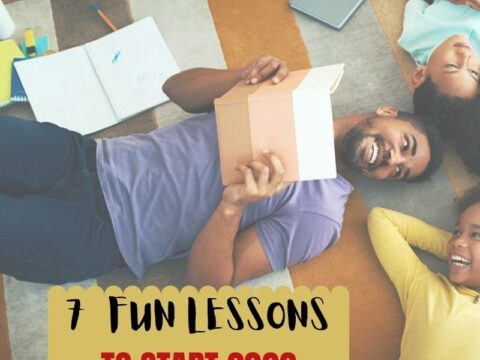 Everyone wants to write a book — right? Studies show that 74% of people think they have a book in them. Teens are no exception. With the ease in which that can be done, thanks to word processors like Word and Docs, online editors like Grammarly, and automated publishers like Kindle, there’s no reason why teens can’t do just that. Look at this list of kids who wrote successful books in their teens — or in one case, before:
Everyone wants to write a book — right? Studies show that 74% of people think they have a book in them. Teens are no exception. With the ease in which that can be done, thanks to word processors like Word and Docs, online editors like Grammarly, and automated publishers like Kindle, there’s no reason why teens can’t do just that. Look at this list of kids who wrote successful books in their teens — or in one case, before:
- Alexandra Adornetto — published The Shadow Thief at age 14 and Halo at 18.
- Christopher Paolini — published Eragon at age 16 (he is now over 30)
- Steph Bowe — published Girl Saves Boy at age 16.
- Cayla Kluver — published Legacy at age 16
- Alec Greven — published How to Talk to Girls at age 9
As a teacher, I recognize that writing a book ticks off a range of student writing skills by providing organic practice in many required standards such as descriptive detail, well-structured event sequences, precision in words and phrases, dialogue, pacing, character development, transition words, a conclusion that follows what came before, research, and production/distribution of the finished product. I’ve tried novel-writing activities with students several times to varied results. Everyone starts out fully committed and enthusiastically engaged but by the end of the project, only the outliers on the Bell Curve finish. The rest have too much trouble balancing the demands inherent to writing a 70,000-word book (or even its shorter cousin, the novella). That I understand, as a teacher-author struggling with the same problems. As a result, usually I settle for less-impassioned but easier-accomplished pieces like short stories or essays.
Then I discovered co-authoring, a way to get all of the good achieved from writing a book without the intimidating bad. Many famous books have been co-authored, most recently, Bill Clinton and James Patterson’s The President is Missing but there’s also Neil Gaiman and Terry Pratchett’s Good Omens, Stephen King and Peter Straub’s The Talisman, and Preston and Child’s Special Agent Pendergast series. Done right, co-authoring encourages not just the writing skills we talked about earlier but perspective-taking, collaboration, and the teamwork skills that have become de rigueur in education.
The most common approach to co-authoring a book is to have students write alternate chapters but this doesn’t work for everyone. Today, I want to talk about four alternative co-authoring approaches that allow students to differentiate for their unique needs:
- vignettes
- multiple POV
- themed collections
- comics
Vignettes
A vignette is a verbal sketch, a brief essay, or a carefully crafted short work of fiction or nonfiction based around a setting, an atmosphere, or the same characters. Typically, it is about eight hundred words but can be shorter. While it can be to one writing piece, in most cases, these are published in collections that are character-driven (rather than plot-driven), located in the same location but with different story goals, or another variance that includes the same setting/atmosphere/characters. Well-known vignettes include:
- Dickens’ Sketches by Boz
- Cisneros’ The House on Mango Street
Here’s how students can collaborate on a book of vignettes:
- Students gather in groups interested in a specific theme, atmosphere, or character.
- As a group, they write a character study of each character who will be included in the vignettes and decide on setting and atmosphere.
- Individually, students write their vignette and then come together as a group to publish them.
- Someone takes charge of ensuring that the ebook is formatted for the needs of the online publisher. For example, Kindle’s requirements are different than iBooks.
Multiple POVs
Multiple Point of Views (POV) make a story more interesting, more personal, and often faster-paced. For students, it’s a great way to share the work required of a novel by writing one told from multiple POVs, each student taking responsibility for telling the story through their unique POV. This instantly gives each POV character a distinct voice with its own goals and themes. Most experts suggest assigning each POV character his/her own chapter. In this way, students know roughly where they are in a plot, understand what has happened to this point and carry it forward through the eyes of their particular character.
Some excellent books written in this way are Holly Robinson’s Same But Different about a child with autism and John Green’s Will Grayson Will Grayson about two boys who share a name. A different take on multiple POVs is used by A.S. King in her YA novel, Please Ignore Vera Dietz where the multiple viewpoints are Vera Dietz at different points in her life.
A Themed Collection
A themed collection is probably the most common collaborative approach and the easiest to achieve if the class lasts only a semester. In this option, each student writes a story that is unconnected to classmate stories in every way except for the theme. For example, the theme might be Life in Colonial America or Life of an 1820’s Immigrant. Students can write a biography, a personal memory, an essay, or a fictional story as long as it revolves around the chosen theme.
To make it more challenging, students might not only share a theme but characters, a setting, or a plot.
A Comic Book
Note: While comic books and graphic novels are different writing forms, for this comic book option, either is acceptable.
Kids and adults love comic books. For some, it’s what first got them excited about reading. For others, comics like Brian Vaughan’s Paper Girls and Jarrett Krosoczka’s Hey, Kiddo are why they returned to reading after pages filled with black-and-white text lost their interest.
Co-authoring with comics as the vehicle is the easiest approach when it comes to dividing up responsibilities. Here’s how you would do that:
- As a group, students collaborate on a storyline, characters, setting, rising action, climax, and timeline.
- Once this is done, each student accepts responsibility for the completion of one task associated with the story such as drawing the frames, inking and coloring the images (which could be done by two students), adding the dialogue bubbles, lettering the emotion bubbles, and proofing.
- Comics can be written old school — by hand — or using a digital comic program like Manga Studio Ex.
Students might select this option because they love comics but also because it’s a more social form of writing in what traditionally is a solitary exercise. Students who have avoided writing because they prefer spending time with friends may rethink that decision when given the option to write with comics.
***
Now really, aren’t these great ways students can collaborate on writing? Students, using one of these approaches, will come away with a completely different attitude about being an author.
More
Middle School lesson plan for writing an ebook
10 Great PowerPoint Changes You Probably Don’t Know About
Innovative Ways to Encourage Writing
Jacqui Murray has been teaching K-18 technology for 30 years. She is the editor/author of over a hundred tech ed resources including a K-12 technology curriculum, K-8 keyboard curriculum, K-8 Digital Citizenship curriculum. She is an adjunct professor in tech ed, Master Teacher, webmaster for four blogs, an Amazon Vine Voice, CSTA presentation reviewer, freelance journalist on tech ed topics, contributor to NEA Today, and author of the tech thrillers, To Hunt a Sub and Twenty-four Days. You can find her resources at Structured Learning.




































